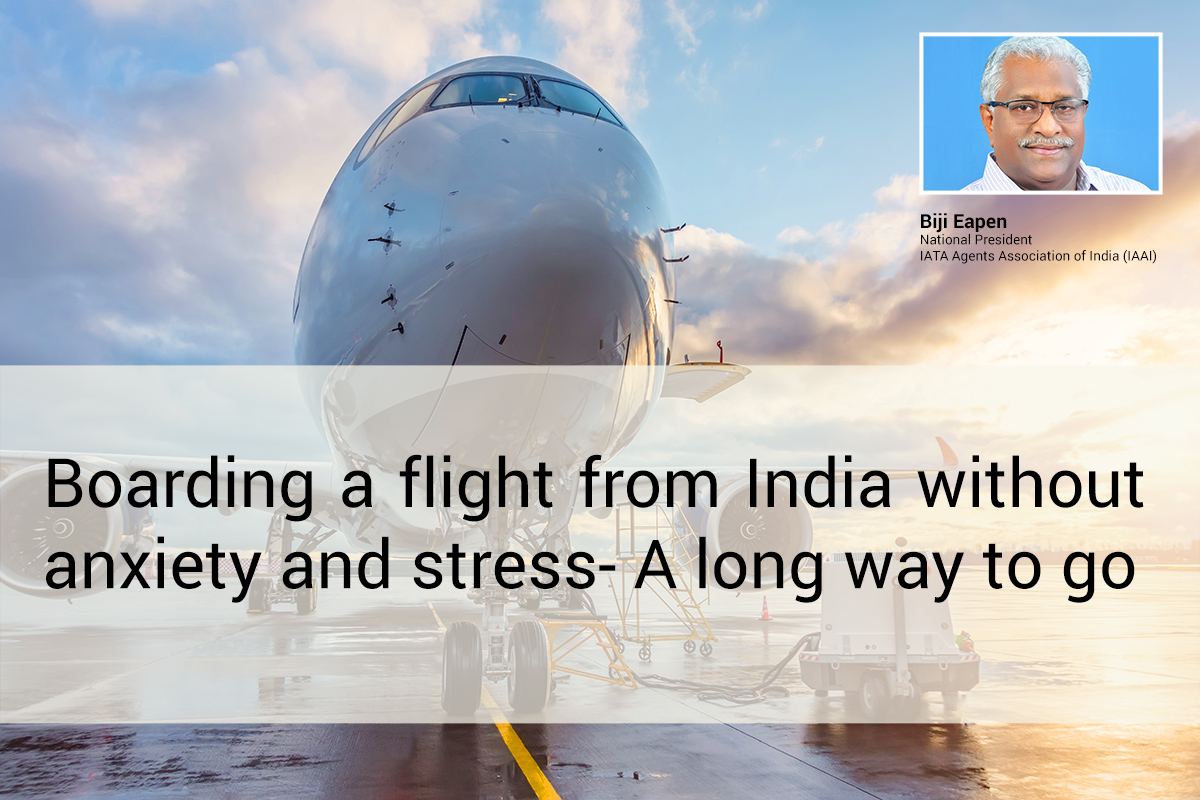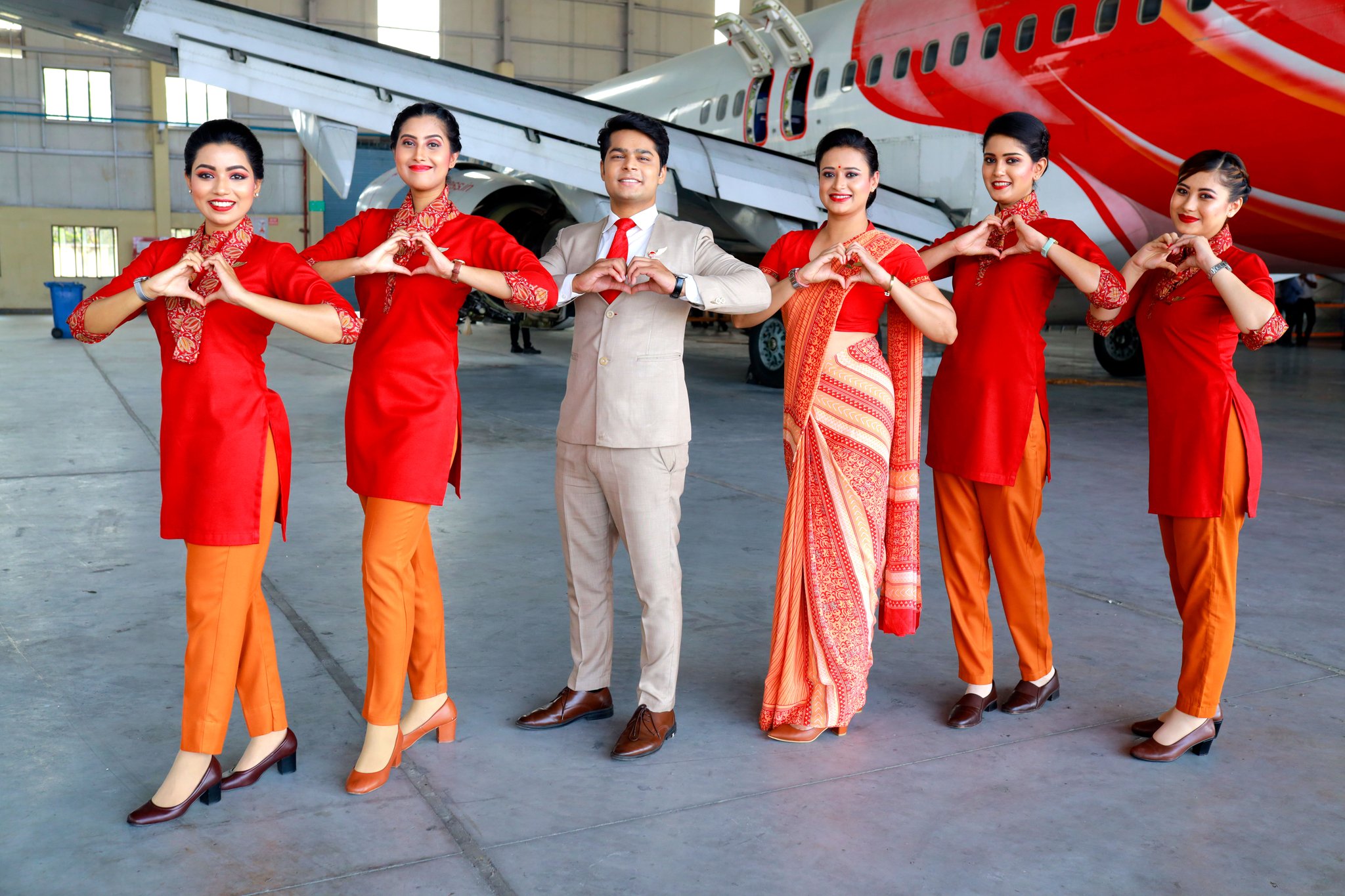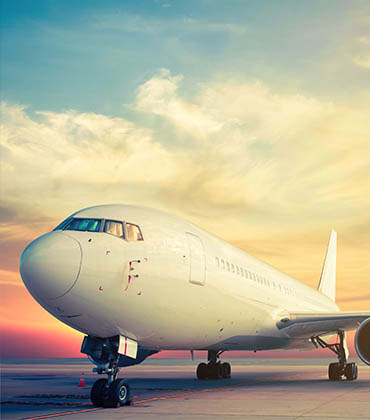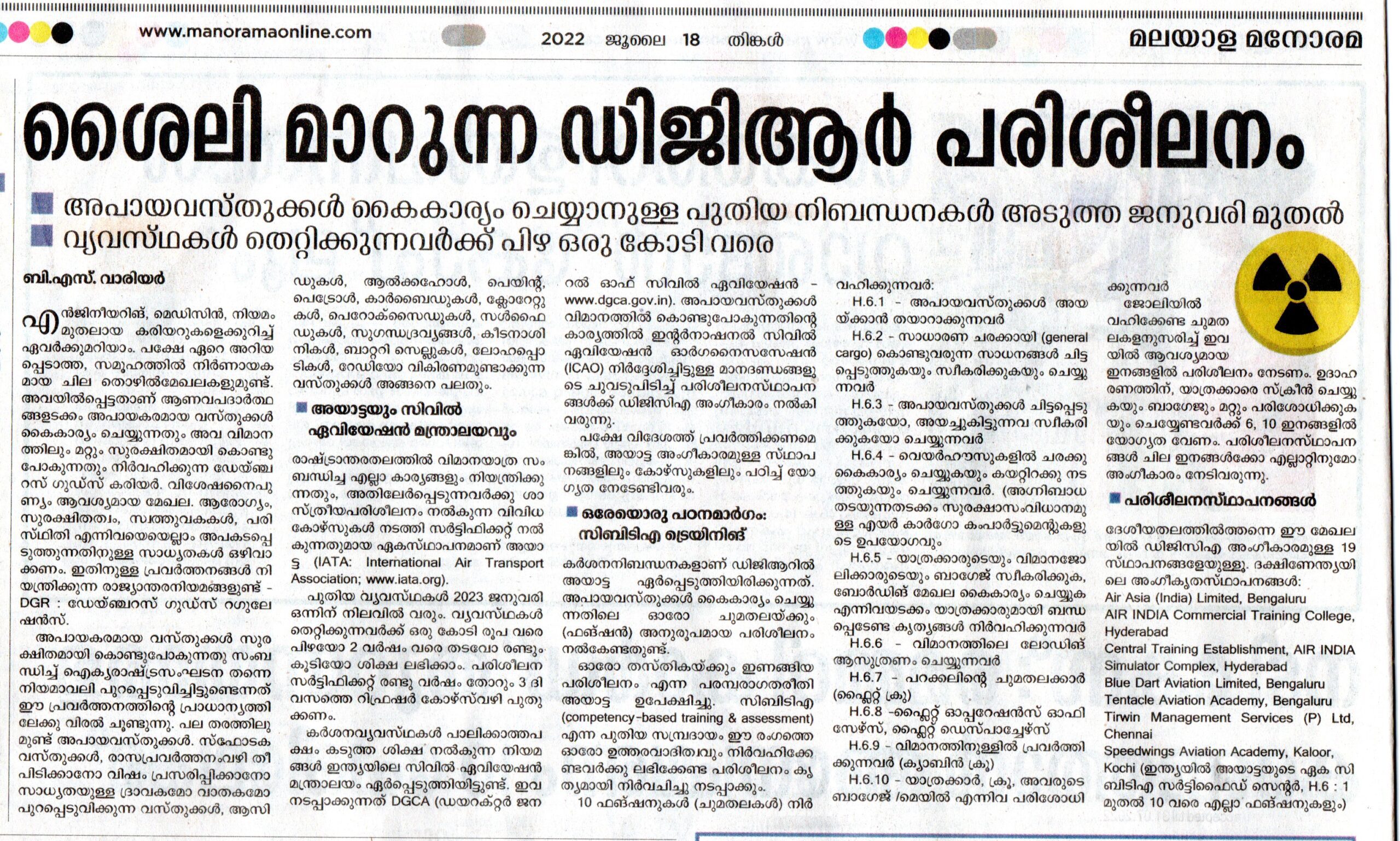


Boarding a flight from Delhi T3 airport evoked a national debate. The media cited it as a horrendous nightmare. Over the last few weeks, passengers have posted pictures and videos of long queues and crowds at Delhi T3 airport and Mumbai International airport. Even entering to passenger terminal was a difficult task. Old-aged and wheelchair passengers with Reduced Mobility waited more than one hour to pass through the Security check. No airline staff was around to support passengers. Social media flooded with visuals of flyers sharing their ordeal; many felt it was like “hell” or worse than a fish market. Airport authorities blamed less workforce, especially the crunch in security staff.
The industry appreciates the timely intervention by Hon. Union Aviation Minister Jyotiraditya Scindia and the sudden installation of five more X-ray machines and the deployment of more workforce slightly relaxed and relieved stress. The PAC’s intervention and interaction by Aviation Secretary with the airport operators for installing additional capacity and requisite facilities signalled positive reinforcement for faster security checks.
It woke BCAS (Bureau of Civil Aviation Security) to recommend the installation of 3T scanners (Computer Tomography Technology) at airports, a project CISF proposed in Oct 2018, which may detect any suspicious items that are hazardous from the aviation security point of view. Currently, the X-ray scanners used at our airports provide only a two-dimensional view of the objects inside hand baggage, and passengers must remove laptops, mobiles, other electronic devices, watches, waist belts, personal wallets, and any metallic items from their hand luggage before going through the scanner.
Airline passenger baggage may contain hazardous materials like lithium batteries, perfumes, dry ice, drain cleaners, matches, bleach, aerosols, or fireworks, which may seem harmless, but can pose a hazard to health, Safety, property, or the environment when transported by Air. Several safety incidents involving batteries in everyday devices such as mobile phones, laptops, and earphones have been reported globally. A fire sparked by a lithium battery in the confined space of a passenger jet cruising at 35,000 ft can be potentially catastrophic.
Hence, identifying and preventing hazardous materials from passenger baggage is a real challenge for security and screening personnel. They must check passenger and personal belongings, which may have dangerous items such as weapons, chemicals, and liquids that are not allowed as carry-on items or toiletry items that exceed 100 ml per bottle. On many occasions, the security personnel end up checking the items physically, in addition to the real-time scanned image, due to the varied items carried by passengers.,
India is a vast country with multiple religions, traditions, and cast. Religious devotees commonly carry camphor tablets, Copra, dhoop sticks, cones, or Holy water, for pujas or pilgrimage; at many airports, passengers always quarrel with the Check-in staff or Security for not being allowed. During festival time, many passengers try to carry crackers in their baggage.
In the Indian scenario, most air passengers are ignorant of baggage restrictions or not briefed on what they can carry in their baggage. Online ticketing is impulse purchasing; it decreases the cognitive capacity of the passenger to know the regulatory requirements.
Lack of briefing at ticketing or reservation points leads passengers to be ignorant of the prohibited items or the risks involved with the carriage of metallic and non-metallic objects or organic and inorganic materials in their checked or carry-on baggage.
Identifying hidden dangerous goods is the first step to reducing the risks. Passengers must be appropriately briefed on the regulations during ticketing or reservation, what they can carry in personal belongings, and what items may require additional approvals to ensure regulatory compliance.
The new Civil Aviation Policy of 2016 with UDAN, the regional connectivity, instigated by our Hon Prime Minister, visualises to see every person who wears a ‘Hawai chappal’ to fly on the ‘Hawai jahaz’ or plane. His vision is to make everybody fly hassle-free and safely without educational or financial barriers.
The government’s current steps focused on optimising the Indian aviation industry:
Our realities:
To achieve these targets, India must invest more in employee safety training. It needs an explicitly well-defined long-term plan to address all deficiencies and discrepancies.
To meet future challenges, India requires a paradigm change to a new Safety culture of Competency-Based Training and Assessment (CBTA) Approach developed by the International Civil Aviation Organization. It has shifted the traditional category-based Dangerous Goods learning to the Competency-based Training and Assessment (CBTA) approach, intensified and broadened the scope of training to all persons involved in air transportation, from passenger reservations to aircraft engineering, whose functions may directly or indirectly impact the movement of passengers’ baggage or cargo and directed the Member Countries to opt their requirements as per national prerequisites.
Aviation safety is not limited to Security. Safety and Security are two sides of a coin. AVSEC and Dangerous Goods (DG) safety training are equally significant in aircraft operation, directly proportional, interconnected, and interdependent, that cannot compromise at any cost. Considering these facts, the Ministry of Civil Aviation must redefine the terminology of “aviation safety” and amplify the scope of its activities.
AVSEC training is on security aspects to ensure overall aviation safety. DG safety training is to provide essential knowledge of recognising and identifying hazardous materials based on chemical properties (flammability, toxicity, chemical stability, and heat of combustion) and its potential risks in the personal items carried in the passenger baggage or cargo. Only DG training will help the aviation employees to be competent in detecting and identifying hazardous material, its properties, degree of hazards, and potential risks, including emergency responses to these risks.
Another primary concern with India is the delay in adopting the Globally Harmonized System (GHS) of Classification and Labelling of Chemicals, implemented by the United Nations in 2003 for the commonly carried items by passengers globally in their checked-in or carry-on baggage.
For passenger safety, the Ministry of Civil Aviation must establish a Hazard Communication Standard (HCS) program aligned with GHS under the CBTA approach. In turn, airline operators must implement a hazard communication (HAZCOM) program, including labels on containers of hazardous chemicals, safety data sheets (SDSs) for hazardous chemicals, and training for all employees involved in air transportation. Each airline operator must also describe in a written programme how it will meet the requirements of the HCS in each area.
Non-reporting of incidents is a stumbling block for Safety in India. The incident that a laptop sparked and flamed on board aircraft in 2017, flights that had smoke in baggage compartments in 2018, or incident in a cargo hold that pilots called “Mayday” never found any place in case studies or references. In instances where a passenger carried 5 kg Dry ice, medical authorities took ‘Patient specimens’ (infectious substances) for research/diagnosis in carry-on baggage, or a pilgrim devotee was allowed to have “copra” up to aircraft, nowhere documented. These were severe incidents indicating the highest-risk warnings for potential slackness or irresponsibility, and without much publicity, all ended up there only.
ICAO wants every incident, minor or significant, must be reported, documented, and published as “case studies” for global reference. Countries, including Gulf states, publicise bulletins with weekly updates on safety incidents or accidents in the industry.
Lithium-ion batteries are susceptible to high temperatures and inherently flammable. Hence, the personnel responsible for check-in, screening, or Security must be competently skilled in verifying the Watt-hours (Wh rating) or the lithium metal content (grams) in electronic devices carried by a passenger in his baggage. It is alarming that many personnel involved in airline operations or flight handling, including CISF, still have to train or properly renew their certification in dangerous goods.
As threats and technology change, the training and development of personnel to ensure they have the competencies, knowledge, skills, abilities, and behaviours needed to perform their functions successfully become vital to strengthening aviation security.
Based on the findings and conclusions of the study, the national board of the IATA Agents Association of India (IAAI) and Airline Users Rights & Grievances Redressal Forum (AURGRF), consisting of the group of experts in DGR, who are also CBTA instructors, submitted a proposal in this regard to the ministry and DGCA on January 5, 2023.
Consequently, the Ministry of Civil Aviation must redefine the regulatory framework to enforce a new safety culture in harmony with international standards. Executing the responsibility through the airline operators will only provide passengers with a stress-free, seamless security screening process that enhances their experience.
The author is National President of IATA Agents Association of India (IAAI), Airline Users Rights & Grievances Redressal Forum (AURGRF), and CMD of Speedwings Aviation Group.
Something went wrong


